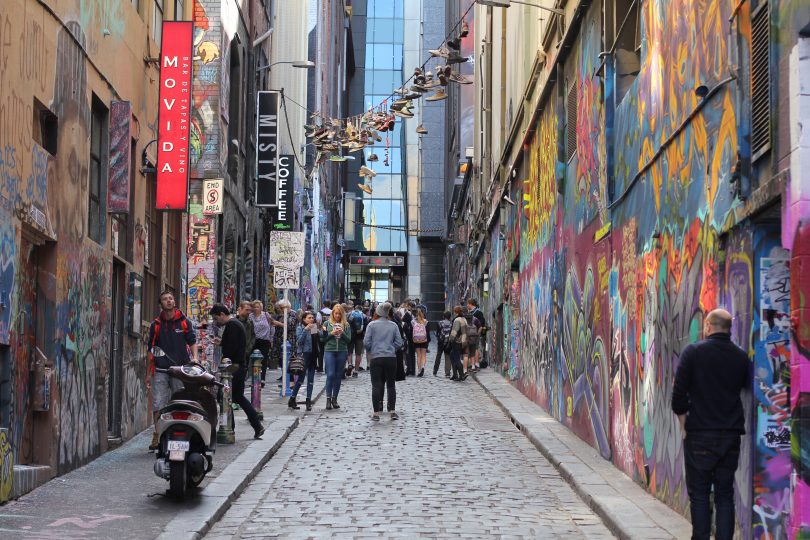If you asked someone to describe an archetypal Melbournite it’s likely the word ‘hipster’ would appear at least once or twice. But don’t let a graffitied laneway or two confuse you, the CBD is anything but. The contemporary subculture of hipster-ism is, as defined by the ever reliable Urban Dictionary:
“Someone who listens to bands you’ve never heard of, wears ironic tee-shirts, and believes they are better than you.”
And while you might spot them outside a Comme des Garçons pop-up or hunting for a new speakeasy bar to frequent, the ever-elusive hipster is not the demographic of the of the Melbourne CBD.
So – who is?
According to the official data from the City of Melbourne, in 2015, the top three industries in the suburb were professional scientific and technical services, financial and insurances services or the public administration and safety industry – in other words, the anti-hipsters.
In fact, nearly 40% of all floor space available are offices. This could have something to do with the fact that the CBD is home to over half of all jobs in Melbourne, with employment increasing by 25% in the last 13 years alone.
By comparing this 25% to the mere 12% increase in floor space in the same time frame, it is evident the city has more people working in less space than ever before.
“My boyfriend and I moved to the CBD because it was affordable and easy,” says CBD resident, Shelly Tait. With a median rental price of $450, the suburb is certainly one of Melbourne’s more affordable central localities. But living in the heart of the city comes with it’s downfalls:
“…The constant noise is annoying…the pollution from buses and cars…and sharing the footpath with everyone when you’re in a rush,” says Shelly.
Accommodation is responsible for just over 20% of the suburb, indicating that while Melbournians are working here, they are choosing to live elsewhere.
Congestion surrounding the suburb is definite problem as the daily commute is a reality for most CBD employees.
55-year-old finance worker, Greg Barker, explains that the issue is mostly down to trying to get to the CBD itself “once you’re in there, it’s alright,” he says. “But Its especially hard if you have a car,” and by hard he means, expensive.
The coveted CBD parking space will cost you anywhere from $15 to close to $90, so If you’re driving to work, you better hope your job in professional scientific/technical services/financial/insurances services/public administration and safety, pays well.
Over 60% of city commuters opt for public transport to get to and from work. So, if you want to observe the true demographic of the Melbourne CBD, you need only hop on a train or tram in peak hour to get unavoidably up close and personal with the masses.
Oh and, don’t worry about encountering a rouge hipster along the way; apparently they’re far more partial to bikes.

